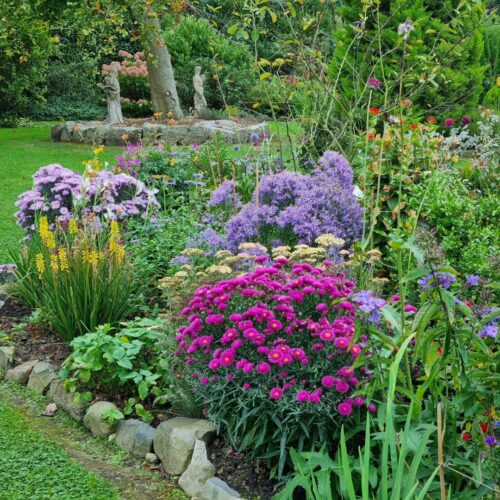Learn how to winterize perennial plants and keep them healthy and across cold weather in simple, easy-to-follow steps.
In fall, most perennial plants start to slow down and go dormant for the winter. To help them come back healthy next spring, you need to give them a little care in autumn once the weather cools down and they stop growing. Follow these tips and learn How to Winterize Perennial Plants for a long winter rest.
How to Winterize Perennial Plants

Examine Closely
The end of the growing season is a great time to review your perennial garden. Right now, you’ll remember what went well and what didn’t better than you might next spring. Take a close look at the garden and compare your ideas for the space with how the plants are actually doing.
Which perennials did well? Which ones struggled, and can they be moved to a spot where they’ll grow better? Are there areas that need more color at certain times of year? Walk through the garden and make notes as you go.
Discard Weeds
As your perennials start to slow down, some cool-weather weeds begin to thrive—and many of these weeds can survive through winter. Even small weeds can quickly become a big problem next spring. Go through the garden and pull or dig out any weeds by the roots. If they’re hard to pull, water the area well to soften the soil, making it easier to remove the roots.
Water Adequately
For most plants, keeping them hydrated in the fall is important to help them survive the winter. If your area has a dry autumn and the soil feels dry about two inches down, water the garden well before the ground freezes.
Install a sprinkler for your perennial beds, and it will help water soak deep into the soil more than just a quick spray from a hose would. To save water, focus on watering directly around the roots of each plant.
Take Off Damaged Leaves
For plants that have issues with insects or disease, it’s best to cut them down to ground level. When you remove these problematic leaves, it helps prevent pests or diseases from coming back next year. But for healthy perennials, leave them standing through the winter. Their leaves help protect the plant’s growing point, and the stems and foliage provide shelter for helpful insects and animals. Plus, the seed heads give birds an excellent food source during winter.
Mulch Particularly
Keep in mind that not all plants require extra mulch to get through winter. For some, mulch can harm them by holding moisture around the stems, which can cause rot. Here are three situations when adding mulch is a good idea:
Tender perennials: Cold-sensitive plants in your area can often survive the winter if a layer of mulch covers and protects their roots.
Freshly Planted Perennials: If you have planted Perennials in the fall, they don’t have deep roots yet, so they benefit from a layer of mulch to keep them warm.
Regions that Have Frequent Freeze: In USDA Hardiness Zones 7 and 8, winter temperatures can change a lot, which makes the soil contract and expand. This can cause frost heaving, where plants are pushed up out of the ground and leave their roots exposed and at risk of damage.
The best time to add mulch to perennials in the fall is after the top 1-2 inches of soil have frozen. Mulch helps insulate the soil and keeps it steadily cool through the winter. Loose organic mulches like shredded leaves, bark chips, pine needles, and straw are great choices for helping perennials survive the winter.



